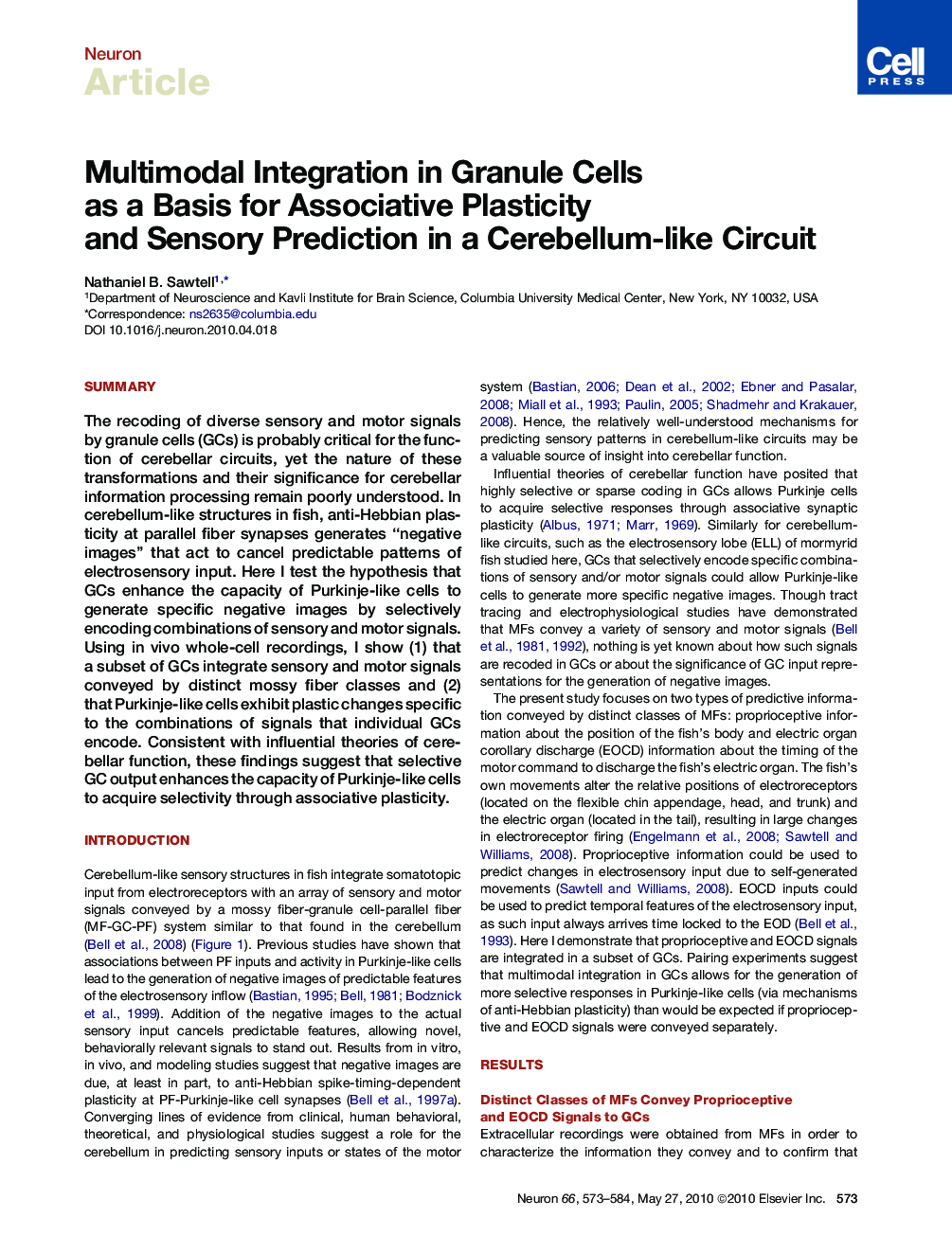| Article ID | Journal | Published Year | Pages | File Type |
|---|---|---|---|---|
| 4321826 | Neuron | 2010 | 12 Pages |
SummaryThe recoding of diverse sensory and motor signals by granule cells (GCs) is probably critical for the function of cerebellar circuits, yet the nature of these transformations and their significance for cerebellar information processing remain poorly understood. In cerebellum-like structures in fish, anti-Hebbian plasticity at parallel fiber synapses generates “negative images” that act to cancel predictable patterns of electrosensory input. Here I test the hypothesis that GCs enhance the capacity of Purkinje-like cells to generate specific negative images by selectively encoding combinations of sensory and motor signals. Using in vivo whole-cell recordings, I show (1) that a subset of GCs integrate sensory and motor signals conveyed by distinct mossy fiber classes and (2) that Purkinje-like cells exhibit plastic changes specific to the combinations of signals that individual GCs encode. Consistent with influential theories of cerebellar function, these findings suggest that selective GC output enhances the capacity of Purkinje-like cells to acquire selectivity through associative plasticity.
► Individual granule cells integrate diverse signals from distinct mossy fiber classes ► Granule cell integration provides a basis for associative plasticity and predictions
